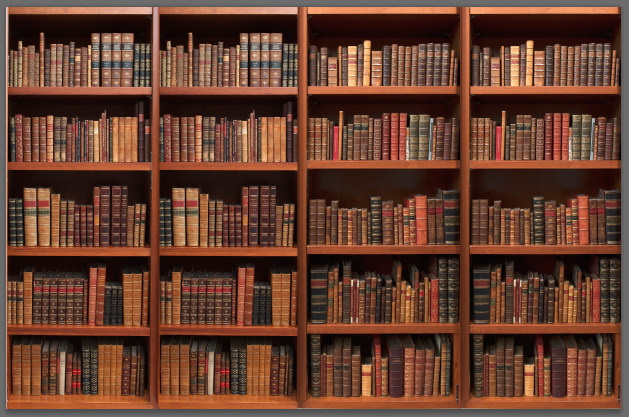
This entry is part of our new “Random Reference” series, which features interesting discoveries made and reference questions answered by our Archives & Library Reference Services staff.
As often happens when working in the Reading Rooms, I was serving a collection to a patron, and I couldn’t help but take a peek inside when they returned it. My curiosity was especially piqued when I noticed an old oversized will in the folder. When conducting historical and genealogical research, wills are an extremely useful resource. They can provide valuable information regarding family relationships, including the testator (individual who wrote the will) and the heirs (individuals who inherit in the will).

Seals from the will of Lord Robert Fairfax
Robert, Lord Fairfax. Will, 15 August 1793. Accession 24941. Personal Papers Collection, Library of Virginia.
In taking a closer look at this particular archival item, I noticed it was atypical for several reasons. Unusually, it was an original or “loose will.” Even up to the present day, when a person dies and leaves a will, it must be brought into court and proved, or validated. Once witnesses confirm the authenticity of the will, it is officially recorded in the will book by the clerk. In most cases, the recorded copy of the will is the only one that exists. In the rare cases that the loose will survives, it is usually written on plain paper rather than vellum.
Additional details from the document were uncommon as well, including the fact that the will had an attached validation document, and was affixed with signatures, stamps, and seals—taxes were levied on legal documents and the attached seal proved duty had been paid. The will was not even recorded in Virginia; it was proved in the Prerogative Court of Canterbury in England. In fact, I located the recorded copy of this will in the online catalog of the National Archives UK. Finally, the text of wills often mention wives, children and various bequests; however, Robert Fairfax left his real estate and all of his personal property to his nephew Denny Martin. Needless to say, I was eager to learn more about this will and its author.
As it turns out, Robert Fairfax, 7th Lord Fairfax, was born in 1707 at Leeds Castle, in the county of Kent in England; he died there in 1793. Nonetheless, Robert and his family played an important role in the history of Virginia going back to the seventeenth century. In 1649, an exiled Charles II gave several loyal supporters grants for what became the Northern Neck Proprietary or “Fairfax Proprietary.” However, it was not until his restoration to the throne in 1660 that the grants became viable. This vast area of more than 5 million acres was located between the Rappahannock and Potomac Rivers, encompassing more than 20 counties in modern-day Virginia and West Virginia.
By 1688, most of the land was owned by Thomas Culpeper and he obtained a new grant. At his death the extensive holdings passed to his daughter Catherine, who married Thomas Fairfax, 5th Lord Fairfax of Cameron. When the elder Thomas died in 1710, Robert’s older brother, Thomas, became the 6th Lord Fairfax. During this period, a large number of grants were sold to individuals who then paid annual rents, providing a steady source of income. There were various boundary disputes over the years, but the Proprietary was essentially left whole during the lifetime of Thomas Fairfax, even during the American Revolution, despite the passage of a law to confiscate the property of loyalists. However, after his death the state of Virginia moved to take over the Proprietary.
When the 6th Lord Fairfax died in 1781, the title conveyed to his younger brother. Robert married twice, but unfortunately had no surviving children. When he drew up his will on 15 August 1791, he left his entire personal estate to his nephew, Denny Martin. The title passed to his cousin, Rev. Bryan Fairfax, a lifelong friend of George Washington and the first American-born Lord Fairfax.
In 1792, Robert received £13,758 from English parliament as compensation for land that was seized in America after the Revolutionary War. However, the issue of the Northern Neck Proprietary was not officially settled until 1816, when the United States Supreme Court decided in the case Martin v. Hunter’s Lessee that the Commonwealth of Virginia owned the land.
The many grants, surveys, and associated records from the Northern Neck “Fairfax” Proprietary survive and are held by the Library of Virginia. The grants have been indexed, cataloged, and digitized, and are searchable through the Library of Virginia online catalog.
- Fairfax Family Northern Neck Proprietary Papers, 1688-1810. Accession 24062. Personal Papers Collection, Library of Virginia. View the guide to the collection here.
- Robert, Lord Fairfax. Letters, 1768-1769. Accession 32428. Personal Papers Collection, Library of Virginia.
-Dawn Tinnell, Senior Reference Archivist
Sources for Additional Information
- Gray, Gertrude. Virginia Northern Neck Land Grants 1694-1742. (Baltimore: Genealogical Publishing Co., Inc., 1987.)
- Groome, H.C. Fauquier during the Proprietorship. (Bowie, MD: Heritage Books, Inc., 2002.)
- Joyner, Peggy Shomo. Abstracts of the Northern Neck Warrants & Surveys. (Portsmouth, VA: Peggy Shomo Joyner, 1985.)
- Weisiger, Minor T., compiler. “Northern Neck Land Proprietary Records.” (Richmond: Library of Virginia, November 2002.)










